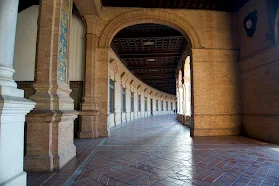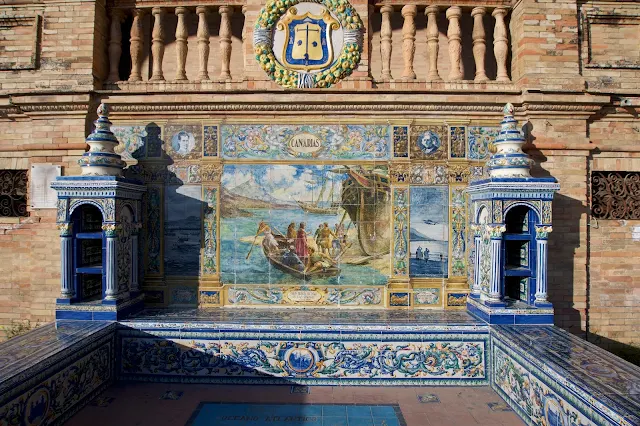The beauty of Spain. Plaza de España in Seville.
The beauty of Spain. Spain Square in Seville.
When the Plaza de España was built?
 |
| Foto by Ildar Islamgulov |
Street musicians performing daily at the Plaza de España create a wonderful atmosphere for relaxation.
Watch a short video to get a feel for this atmosphere.
The beauty of the Plaza de España as a mementos.
 |
| Foto by Ildar Islamgulov |
Canals, bridges, graceful pavilions with tall, slender towers are like decorations created by a talented artist for a fabulous production that glorifies Spain.
Plaza de España architecture.
The architect of all this splendor is Anibal Gonzalez who created similar projects for international exhibitions that have adorned not only cities of Spain.
Even though the square is not yet a hundred years old, it has become the hallmark of Seville, along with the old Alcazar and the Cathedral.
 |
| Foto by Ildar Islamgulov |
San Telmo Maria Luisa.
The entire area, which was miraculously transformed for the 1929 exhibition, once belonged to the country residence of San Telmo Maria Luisa.
 |
| Foto by Ildar Islamgulov |
Maria Luisa Fernanda - Infanta of Spain, the youngest daughter of King Ferdinand VII and Maria Cristina of Bourbon from Sicily. In the second half of the 19th century, she lived with her husband Antoine of Orléans in the San Telmo Palace, and in 1893 she donated to the city a huge plot of land with palace gardens. Since then, the largest park in Seville has been named after her.
The inimitable style of Plaza de España.
 |
| Foto by Ildar Islamgulov |
Plaza de España gracefully combines the old and the modern - tourists can be seen driving rare cabriolets around the city.
My self standing on the Plaza de España.
Thanks for watching everyone, and have a nice day!




Comments